Brioche is a very rich delicacy. It’s not quite bread and not quite pastry, but it is all delicious! It is made with a lot butter and eggs and is very versatile. It can be shaped into the traditional tête and grande tête shapes; it can be fashioned into loaves or freestanding braids; it can be used as the base for a variety of coffee cakes; and it makes wonderful French toast.
I waited until the last minute to make this brioche, but let me tell you, it was worth the wait. I only had time to make two of the breads for the Mellow Bakers this month. I’m so glad I opted to make this one. It is the best brioche I’ve ever tasted.
I’ve made Rich Man’s Brioche and Poor Man’s Brioche from the Bread Bakers’ Apprentice book. Due to the amount of butter used, this version would be considered Middle Class Brioche.
Brioche
Adapted from: Bread: A Baker’s Book of Techniques and Recipes by Jeffrey Hamelman.
Ingredients:
- Bread Flour 4 1/4 cups
- High-gluten Flour 1 1/4 cups
- Water, cold 1/4 cup
- Eggs, cold 6
- Salt 1 Tablespoons
- Sugar 6 Tablespoons
- Yeast 1 1/2 Tablespoons
- Butter, cold 1 1/2 cups (3 sticks)
Directions:
Day 1: Make sure everything is cold
. I thought this was a rather interesting step, but I mixed all the dry ingredients together (except the yeast) and put it in the refrigerator anyway. I only meant to keep it there for a few hours, but it took a couple of days before I actually got around to making the dough. I keep my yeast in the refrigerator anyway so I didn’t need to cool it off.
Mixing the Dough:
Mix all of the ingredients except the cold butter in a mixer until the ingredients are incorporated. Mix the dough until it is strong and tough. This usually takes 5 to 7 minutes in a spiral mixer. My mixer had a hard time with this so I had to use my hands to make sure everything was incorporated.
In the meantime, take the cold butter and beat it with a rolling pin until it is pliable. This part is a little bit tricky so it’s best to do this between sheets of plastic or wax paper. I used wax paper and the butter kept wanting to slide out from under the paper. I didn’t take a photo of this process because I was having too much fun and forgot.
Once the butter is pliable and the dough is strong, start adding the butter a little bit at a time until it is completely incorporated into the dough and the dough is smooth and satiny. This will take awhile, probably about 8 to 10 minutes. All that butter was giving my mixer fits so I finished mixing this part by hand as well.
Once the butter has been completely incorporated into the dough, put the dough into a lightly floured bucket or bowl, cover and let it rest at room temperature for an hour.
Chill the Dough Overnight:
After an hour, fold the yummy dough, put it back in the container and refrigerate overnight. Degas the dough 2 or 3 times over the next several hours. If you remember that is. I put mine in the refrigerator overnight so I forgot this part. However, I did degas it when I took it out of the refrigerator to shape it.
Day 3:
Shaping the Loaves:
I used about 14 ounces and shaped one loaf into a round ball and placed it in my brioche pan. Then I made the topknot. I filled the mold to about 50 percent capacity so that it would have room to rise a bit.
I took some more dough and shaped it into a loaf, then placed it in a glass loaf pan.
I had just enough dough left for this cute little bun.
Proofing the dough:
When the dough is fully proofed, it is suppose to fill the mold or pan to 85 percent. This dough was so cold, it took a while to warm up to room temperature.
But it finally did reach about 85 percent capacity or so.
Baking the Loaves:
Once the loaves are proofed, brush them with an egg wash and bake at 350 degrees. The bake time will depend on the weight and shape of your loaves. It took a while to bake both of the loaves. I tented them with aluminum foil partway through the bake cycle because they were starting to burn on top, but the inside of the loaves were still gooey.
The finished loaves should have a rich and deeply golden crust and a wonderful aroma. Both of the loaves cracked a bit when they were baked and the topknot ended up sort of lopsided on this one, but they’re so good, it doesn’t really matter.
The bread is melt-in-your-mouth kind of goodness. It smelled and tasted heavenly!
This bread has been YeastSpotted. Please visit Wild Yeast to view all of the lovely breads in the roundup.

Mellow Bakers was started by Paul at Yumarama.
We baked breads from Bread: A Baker’s Book of Techniques and Recipes by Jeffrey Hamelman.
Happy Baking!
Cathy
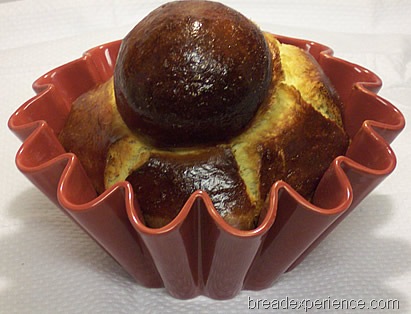
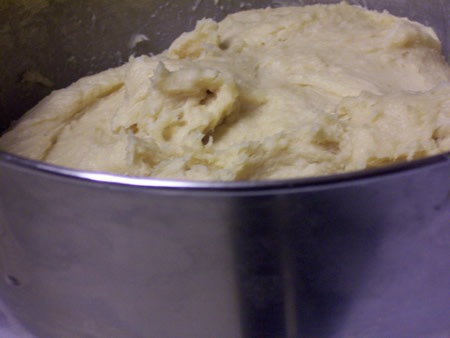
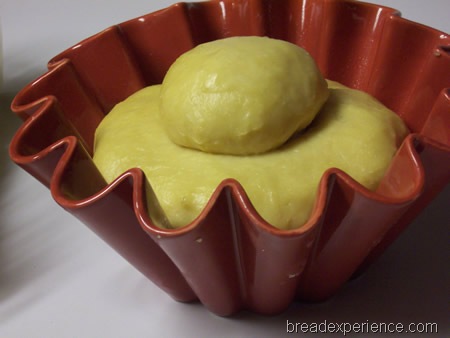
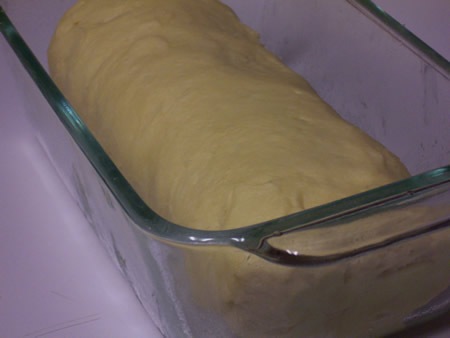
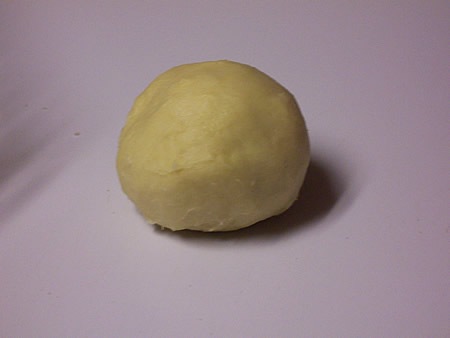
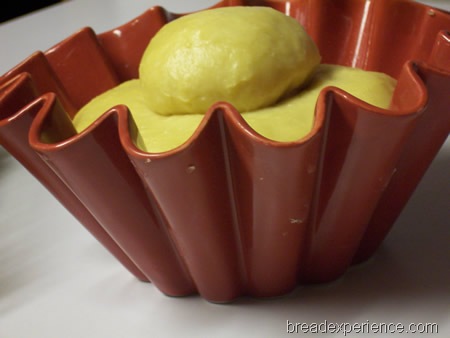
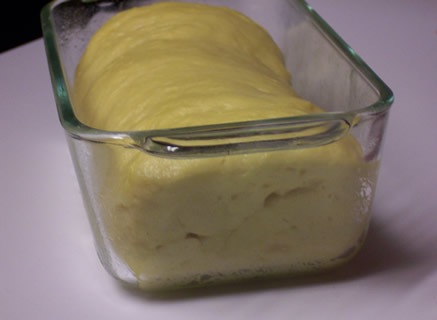
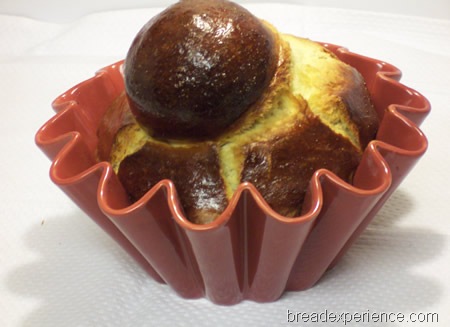
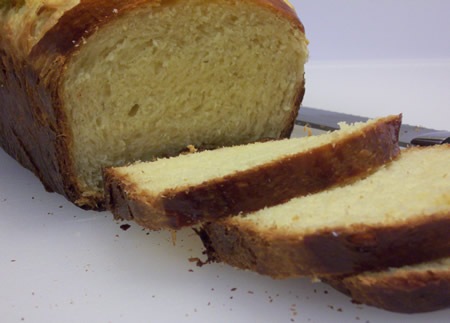
Joanna says
Lovely post Cathy, great photos and explanation – much more coherent than mine I have to say! I’m going to add a link to this one on my blog post too. This brioche is really getting the thumbs up from everyone who makes it, isn’t it?
Cathy (breadexperience) says
Thanks Joanna! Yes, this brioche definitely gets a thumbs up.
Baking Supplies says
Baking Supplies
Awesome post!!! Looks so delicious cake. I would like to have it. Thanks so much….
Cindy says
Hi Cathy – I tried this brioche recipe. I followed the instructions, and put the dough in the fridge over nite. I just took it out to degas it and the dough is as hard as a rock. I can’t even get it out of the bowl. Any ideas on what might have happened? I hope I don’t have to throw this out, what a shame/waste. It never got really doughy, it was just like pie dough consistency. Thank you for your help.
Cathy says
Hi Cindy,
It sounds like the dough may have needed more hydration if it wasn’t pliable when you mixed it. I wouldn’t throw it out. Let it warm up to room temperature and see if you can work with it.
cindy says
Okay – I have reworked the dough and I think this is going to happen. It says to bake at 350 – but for how long?
Cathy says
I’m glad you were able to rework the dough.
The bake times will vary based on the weight and shape of the dough. There isn’t a suggested bake time. When the brioche is fully baked, the crust should be a rich and deeply golden color.
It will take a while to bake and due to the high proportion of eggs, butter, sugar, baking it at 350 will allow it to bake longer. The crust will start to brown before the loaf is fully baked so you’ll probably want to tent it to make sure it gets baked through without burning on top. If it’s not baked sufficiently, it might not have enough structure to hold it up and could cave in.
Once it’s baked, you will be rewarded with a wonderful aroma.
Happy Baking!
Cathy